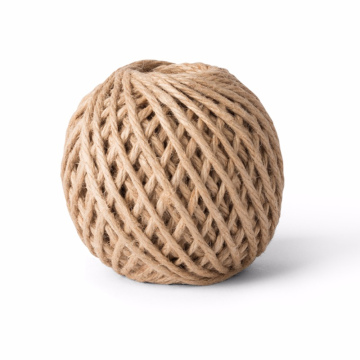Introduction to Japanese Desserts
Japanese desserts, known as "wagashi," are an integral part of Japan’s culinary culture, distinguished by their delicate flavors, seasonal ingredients, and artistic presentation. These sweets offer a unique diversity that reflects the country's rich history and its appreciation for nature's beauty. At the heart of Japanese desserts is the emphasis on balancing flavors and textures, often highlighting the natural sweetness of ingredients such as rice, beans, and fruits.
One of the defining characteristics of Japanese confectionery is the use of high-quality, natural ingredients. Common components include rice flour, which is used to create chewy mochi, and adzuki beans, often transformed into sweet red bean paste. The focus on seasonal ingredients is also crucial, as many Japanese desserts are designed to evoke the beauty of nature throughout the year, incorporating elements such as cherry blossoms in spring or chestnuts in autumn. This strong connection to nature not only enhances the flavor profile of the sweets but also creates a visual appeal that is essential to Japanese aesthetics.
The history of Japanese desserts is deeply intertwined with cultural practices and regional variations. Traditional sweets have roots in the ceremonial practices of tea, where wagashi pairs beautifully with green tea. Over time, Western influences introduced new ideas and ingredients, resulting in modern adaptations that marry traditional techniques with contemporary tastes. Examples include fusion desserts like matcha-flavored cakes and pastries that utilize Japanese ingredients. Today, Japanese sweets continue to evolve, maintaining a dialogue between the past and the present while captivating the hearts of people globally.
Key Ingredients in Japanese Sweets
Japanese desserts, known for their delicate flavors and meticulous presentation, utilize a variety of unique ingredients that play crucial roles in their preparation. One of the main components is rice flour, commonly used to create mochi, a chewy rice cake that serves as a base for many traditional sweets. Its texture allows for versatility, incorporating fillings or being shaped into various forms.
Azuki beans, another vital ingredient, are often found in the form of sweet red bean paste. This paste is a staple in Japanese desserts, enhancing flavors and providing a natural sweetness, particularly in treats like dorayaki and anmitsu. Not only does it contribute to taste, but it also adds a nutritional element, being high in protein and fiber.
Furthermore, matcha, the finely ground powder of specially grown green tea leaves, has gained popularity in both traditional and modern desserts. Its vibrant green hue and distinct flavor elevate sweets such as matcha ice cream and cakes, while also infusing them with health benefits, thanks to its rich antioxidant content.
In addition to these staples, seasonal fruits are frequently incorporated into Japanese desserts, offering freshness and variety. Fruits like strawberries, yuzu, and persimmons highlight the seasonality that is a cornerstone of Japanese cuisine.
Lesser-known ingredients, including kanten (agar-agar), serve as a vegetarian gelatin alternative. It is often used in jelly-like desserts that provide a unique texture. Sweet soy sauce is another ingredient that enriches the flavor profile of various sweets, adding depth and enhancing sweetness with its umami notes. The careful sourcing and combination of these ingredients not only celebrate Japan's culinary heritage but also showcase the artistry involved in creating these sweet temptations.
Popular Japanese Desserts to Try
Japanese desserts, known for their intricate flavors and beautiful presentations, offer a delightful experience for culinary enthusiasts. Among the most popular treats is mochi, a sticky rice cake with a chewy texture. Traditionally, mochi is made from glutinous rice and can be enjoyed plain or filled with various fillings, such as sweet red bean paste or ice cream. Variations like daifuku add an exciting element by introducing seasonal fruits like strawberries, enhancing the overall taste and texture.
Another quintessential treat is dorayaki, a delicious confection made of two fluffy pancake-like cakes filled with sweet red bean paste. The combination of the warm, soft exterior and the rich, sweet interior creates a harmonious texture that delights the palate. Some variations include fillings like custard or chocolate, providing a modern twist on this classic dessert. Dorayaki can be easily found in convenience stores across Japan, making it an accessible indulgence for visitors and locals alike.
Wagashi, traditional Japanese sweets, often embody the beauty of nature. These delicate confections come in various forms, shapes, and flavors, with seasonal ingredients reflecting the four seasons of Japan. Common varieties include nerikiri, which combines sweet bean paste with rice flour, and yatsuhashi, a cinnamon-flavored sweet that is popular in the Kyoto region. Exploring wagashi not only offers a taste of Japan but also serves as an artistic experience as the intricate designs are often meant to evoke natural scenery.
For those wishing to try their hand at making these delightful desserts at home, there are many simplified recipes available online. Local Japanese grocery stores can provide the necessary ingredients, making it feasible to recreate these culinary treasures. Whether sampling them at a specialty shop or crafting them in the kitchen, experiencing Japanese desserts is a delightful way to appreciate Japan’s rich confectionery culture.
Making Japanese Desserts at Home: Tips and Tricks
If you are eager to venture into the delightful world of Japanese desserts, it is essential to equip yourself with some practical guidance. First and foremost, understanding the basic tools can help streamline your dessert-making experience. Invest in essential kitchen appliances such as a steamer, a rice cooker, and measuring cups. Additionally, having a good quality mixing bowl, whisk, and a spatula can facilitate the preparation process. These tools are often fundamental when making traditional sweets like mochi or dorayaki.
When sourcing ingredients, it is crucial to utilize authentic products for the best flavors. Visit your local Asian grocery store or check online for items like sweet rice (glutinous rice), matcha powder, and adzuki beans. Be aware that some ingredients may not be readily available; however, many recipes can be adapted with commonly found alternatives. For instance, while glutinous rice is preferred for a chewy texture, regular short-grain rice can suffice in a pinch. Always read through recipes beforehand to ensure that you have the necessary supplies and make substitutions where necessary.
As with any culinary endeavor, especially when exploring Japanese desserts, common mistakes can include mismeasuring ingredients or not allowing sufficient time for preparation. Pay close attention to proper mixing and cooking times, particularly when making delicate confections like dango. Start with simpler recipes to build your confidence, such as easy matcha brownies or simple fruit mochi.
Lastly, embrace the artistry of dessert presentation. Japanese sweets often emphasize minimalism and aesthetics, so consider using elegant serving dishes and garnishing with fresh fruits or edible flowers. Sharing these delightful creations with family and friends can be incredibly rewarding and can lead to joyful conversations around culture and cuisine. Never hesitate to experiment in your kitchen; each attempt brings you closer to mastering the art of making exquisite Japanese desserts at home.








